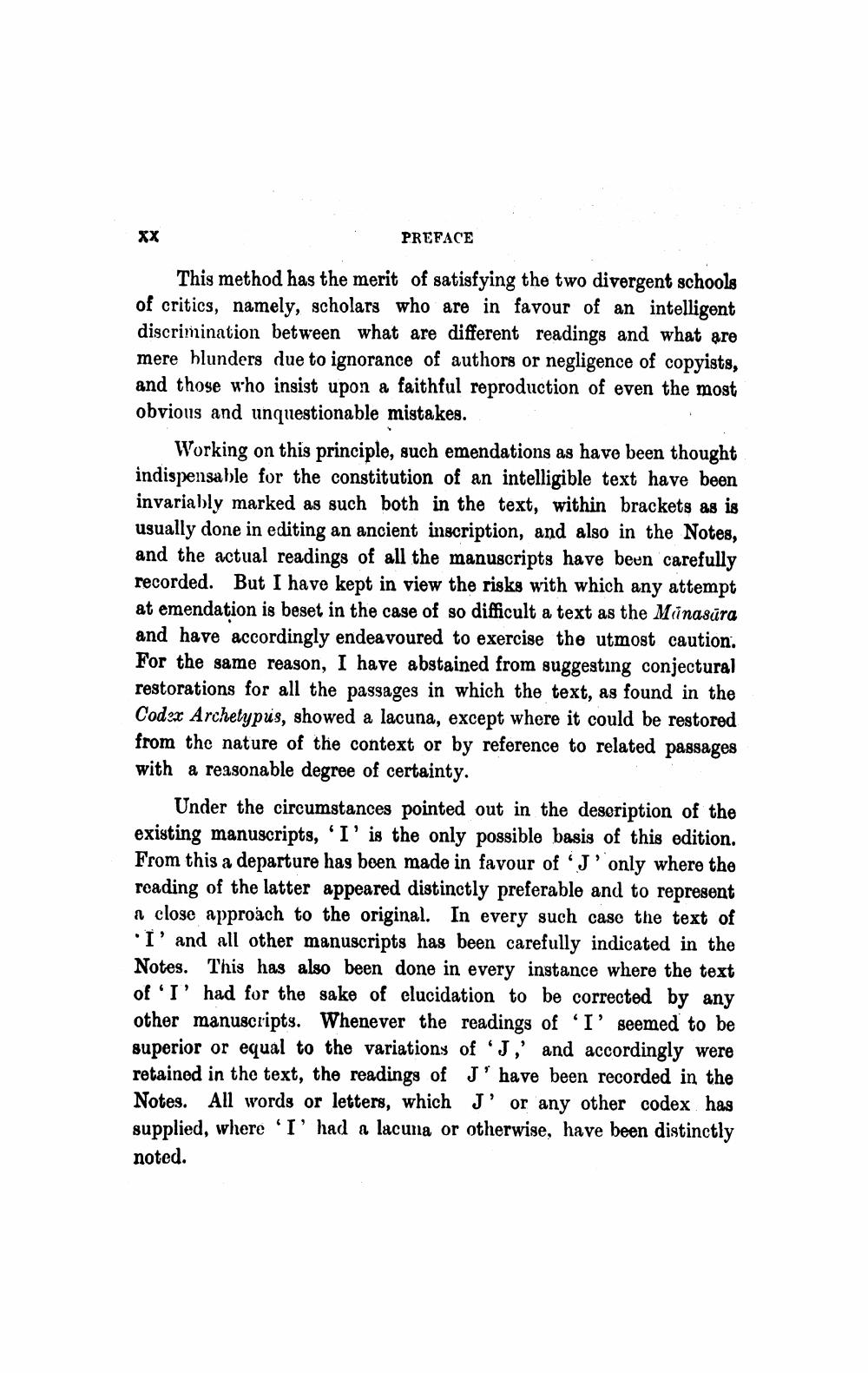________________
XX
PREFACE
This method has the merit of satisfying the two divergent schools of critics, namely, scholars who are in favour of an intelligent discrimination between what are different readings and what are mere blunders due to ignorance of authors or negligence of copyists, and those who insist upon a faithful reproduction of even the most obvious and unquestionable mistakes.
Working on this principle, such emendations as have been thought indispensable for the constitution of an intelligible text have been invariably marked as such both in the text, within brackets as is usually done in editing an ancient inscription, and also in the Notes, and the actual readings of all the manuscripts have been carefully recorded. But I have kept in view the risks with which any attempt at emendation is beset in the case of so difficult a text as the Minasüra and have accordingly endeavoured to exercise the utmost caution. For the same reason, I have abstained from suggesting conjectural restorations for all the passages in which the text, as found in the Codex Archetypus, showed a lacuna, except where it could be restored from the nature of the context or by reference to related passages with a reasonable degree of certainty.
Under the circumstances pointed out in the desoription of the existing manuscripts, 'I' is the only possible basis of this edition. From this a departure has boen made in favour of 'J'only where the reading of the latter appeared distinctly preferable and to represent a close approach to the original. In every such case the text of
I' and all other manuscripts has been carefully indicated in the Notes. This has also been done in every instance where the text of 'I' had for the sake of elucidation to be corrected by any other manuscripts. Whenever the readings of 'I' seemed to be superior or equal to the variations of 'J,' and accordingly were retained in the text, the readings of J' have been recorded in the Notes. All words or letters, which J' or any other codex has supplied, where 'I' had a lacuna or otherwise, have been distinctly noted.




